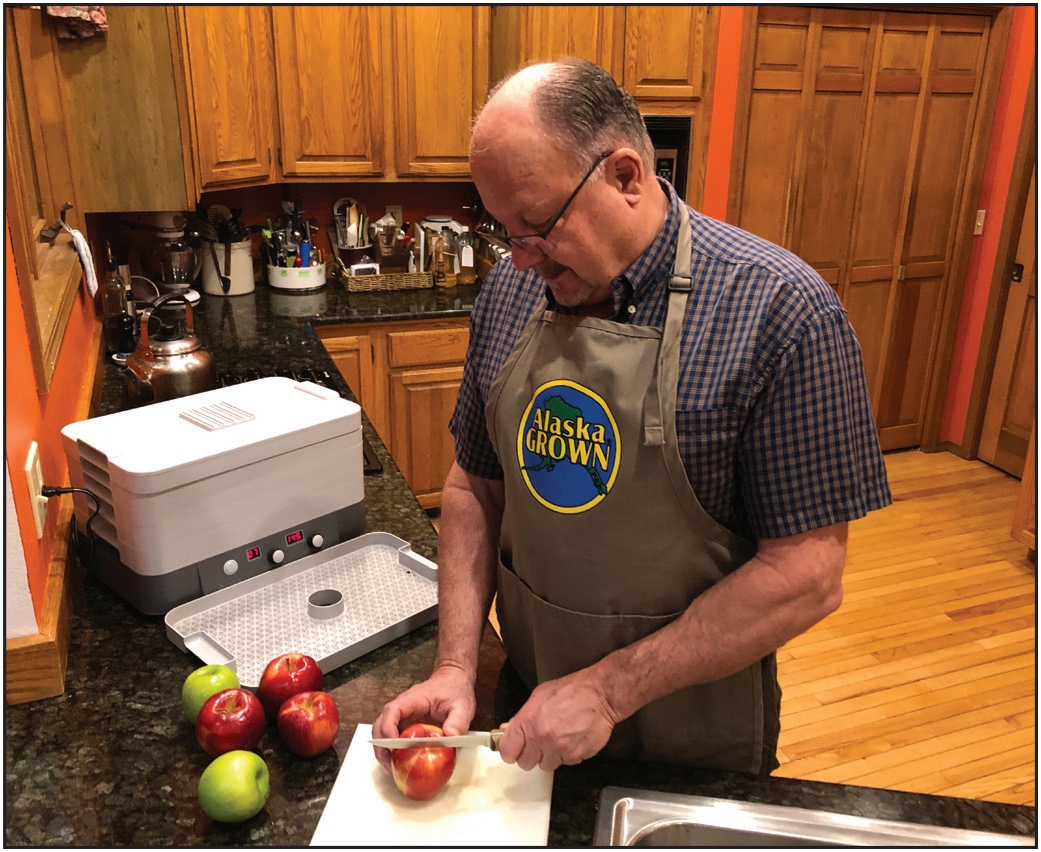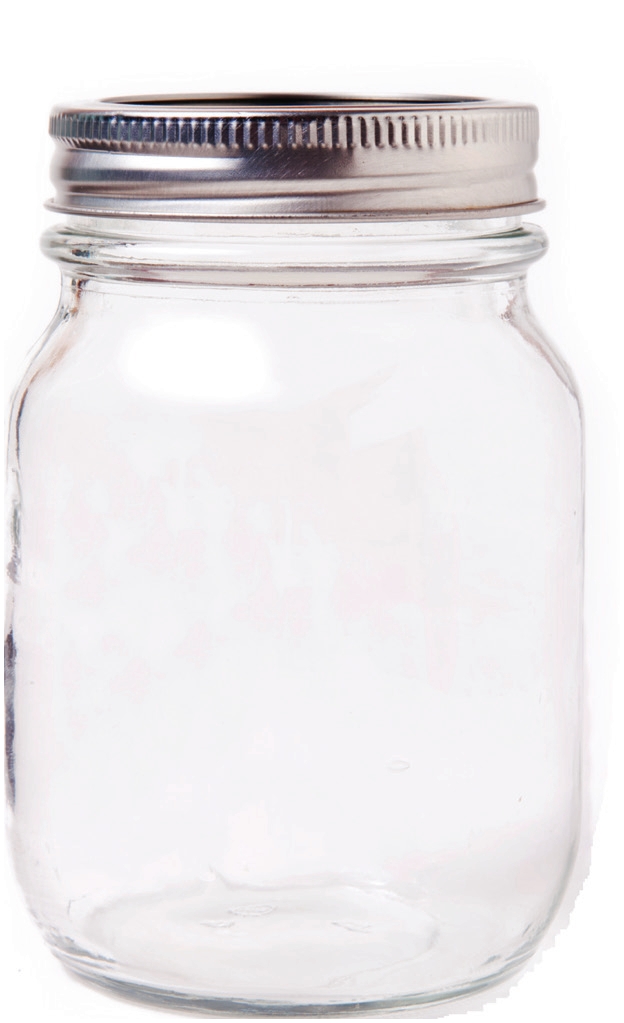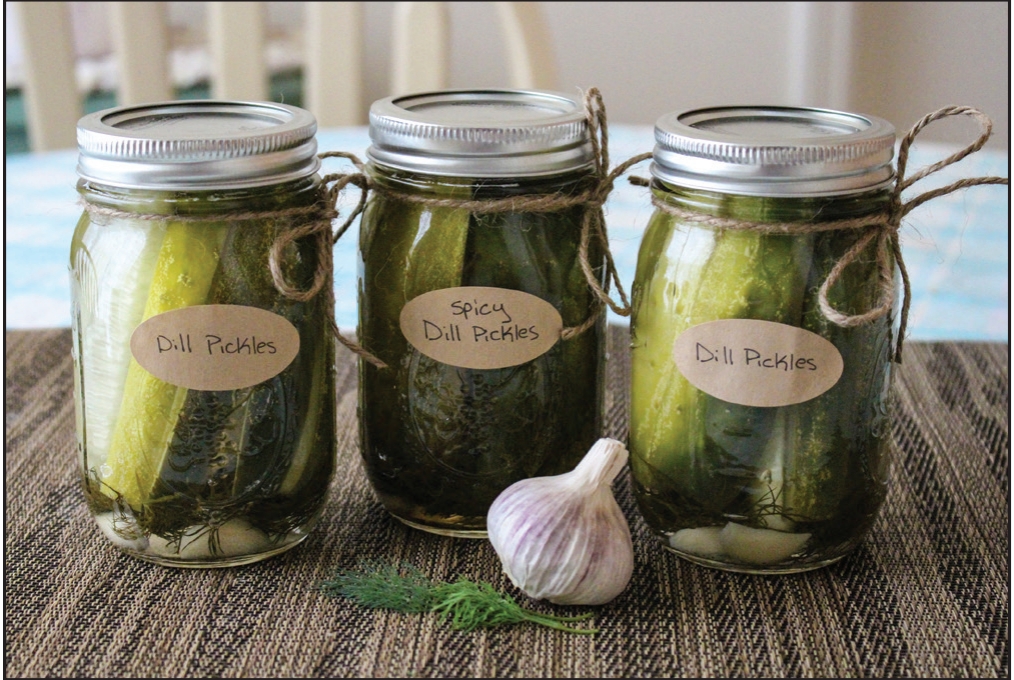Preserving Food at Home
FNH-00700 View this publication in PDF form to print or download.
Preserving food harvested from gardens, fruit trees, farms, rivers, lakes, sea and woods keeps food to eat in times when less is available. Safe, scientifically researched methods for canning, freezing and drying are ways of preserving edible food at home.
People living in both rural and urban areas experience the same sense of accomplishment from home food preservation. Home canning provides stored food for quick use later. Freezing offers a quick way to preserve food for later use. Drying provides fast snacks and lightweight meals to carry.
Reasons most people choose to use home food preservation methods are: (1) saving available food for later use, (2) preference over commercially prepared products, (3) family tradition or cultural practices and (4) special dietary considerations.
The method of preservation varies. Consider time, costs, nutrient retention and shelf life (shown below) of the different methods. Decide how you would like to store your finished product and what is available for this in your home.
Consider the type of food. Some foods will be better for canning, others for freezing or drying. Consider the equipment, supplies and skills needed for that preservation method. Decide the storage capacity in your home and energy needed for storage.

Whether home-canned and frozen foods make up a major part of your family’s diet or whether you just want to “put up” a few jars of old favorites, Cooperative Extension Service food preservation publications show the steps.
Preserving by Various Methods
| Method of Preserving Food | Ease of Using Method | Costs | Nutrient Retention | Shelf Life |
|---|---|---|---|---|
| Canning | Intermediate | Best | Intermediate | Best |
| Freezing | Best | Worst | Best | Intermediate |
| Drying | Worst | Intermediate | Worst | Worst |
Spoilage Basics
Food spoils soon after it is harvested or slaughtered. Microorganisms, bruising, punctures or enzyme changes may cause spoilage. Proper handling, storage and preservation practices are needed to stop spoilage and pathogenic growth.
Food left unprotected will begin to change color and flavor and eventually spoil and decompose.
Factors affecting microbial growth include the nutrients in the food, the food’s level of acidity, the temperature at which it is kept, the time food spends at certain temperatures, exposure to oxygen and amount of moisture in or around the food.
Acidity: Foods are considered high-acid or low acid, depending on their pH.
High-acid foods are those that contain natural acid. The pH of acid food is 4.6 or below. Each food is different and may vary in acidity. Generally, all fruits are high-acid.
The vegetable rhubarb, sauerkraut and foods to which vinegar is added, such as certain pickles and relishes, have high-acid pH.
Low-acid food contains very little natural acidity. The pH of low-acid food is 4.6 or above. Low-acid foods are vegetables, meats, poultry, seafoods, mushrooms and soups. Mixed canned foods, which might contain part low-acid and part high acid foods (such as soups), should be treated as low-acid food.
The importance of acidity to the home canner is that molds and yeasts, which exist
in high-acid  foods, are easily destroyed by heating filled jars in briskly boiling water for a
period of time. Some bacteria, however, thrive in low acids and cannot readily be
destroyed at boiling water temperatures. For these, raising the temperature of the
canner to 240°F stops bacteria from forming into spores.
foods, are easily destroyed by heating filled jars in briskly boiling water for a
period of time. Some bacteria, however, thrive in low acids and cannot readily be
destroyed at boiling water temperatures. For these, raising the temperature of the
canner to 240°F stops bacteria from forming into spores.
Temperatures contribute to a microorganism’s growth and control. For example, microorganisms thrive between 40°F and 139°F. Freezing food below 32°F prevents the growth of microorganisms, but does not kill them. It slows down enzyme activity but does not stop it.
Enzymes are proteins present in all living things. They promote normal organic changes necessary to the life cycle. Enzymes are easily destroyed by heat between 170°F and 190°F. Blanching produce before freezing or drying inactivates enzymes.
Temperatures between 140° and 190°F will destroy pathogenic molds and yeasts.
Bacteria are not so easily destroyed. Certain bacteria actually thrive at temperatures that destroy molds, yeasts and enzymes.
Salmonella bacteria are destroyed when held at 140°F. Staphylococcus aureus (staph) bacteria are stopped if food is kept above 140°F. But staph produces a toxin that can be destroyed only by long hours of boiling or by heating to 240°F for a relatively short time.
Clostridium botulinum is a bacterium that may exist in spore form in food. These spores must be destroyed during processing or they can grow and produce one of the most powerful poisons known. The toxin and the spores cannot be destroyed at 212°F. Also, the botulism-causing bacteria thrive on low-acid foods in absence of air and in a moist environment, conditions that are exactly like the conditions inside a jar of canned meat or vegetables.
Time involved in handling food at various temperatures affects safety.

Microorganisms double every 20 minutes between 40°F and 139°F. Handling food quickly prior to preserving it contributes to nutrient value and limiting pathogen growth. Following research based timing is necessary when preserving food in jars and cans.
Moisture and oxygen of food affects microorganisms. Removing enough moisture stops growth and spoilage and slows enzymes. The amount of oxygen around the food makes a difference in what microorganisms are prevalent.
Preserving Food Options
Refrigeration at 40° F slows the growth of microorganisms and enzymes.
Root Cellars with proper temperature, humidity and ventilation, store produce throughout the winter.
Pickling adds vinegar (acetic acid) to lower pH in fresh pack pickles and other acidified foods. Process in boiling water canner or refrigerate for longer storage.
Fermenting uses bacteria to produce lactic acid. This lowers the pH in fermented pickles, kimchi and sauerkraut. For long term it may be kept refrigerated or boiling water canned.
Sugar added to jelly, jam, preserves and conserves with addition of acid ties up free water and lowers pH. Process in boiling water canner, freeze or refrigerate to prevent spoilage.
Dehydrating reduces the water activity bacterial pathogens and spoilage organisms need for growth. Method options may be using a dehydrator, oven, sun, solar or freezer dryer.
Canning uses heat to destroy pathogens and spoilage microorganisms for long-term storage of food at room temperature. This process vents oxygen from the jar, creating an airtight vacuum seal upon cooling.
Boiling Water Canner temperature stops microorganism growth in natural or added high-acid food.
Pressure Canner run at 240°F stops the growth of spore-forming pathogenic bacteria. This is necessary in low-acid food.
Canning Methods to Avoid
Only the boiling-water bath and the pressure canner methods are researched-based for home canning and are recommended for canning. Older methods of preserving food are unreliable and are not recommended.
Open Kettle: Food does not reach temperatures necessary for killing molds, enzymes and bacteria in this. Proper seal may not be obtained.
Aspirin: Aspirin is not a substitute for processing. While aspirin contains a weak germicidal agent that acts as a preservative, it is not adequate for preventing spoilage.
Dishwasher: There is no way to control the temperature or the processing time.
Microwave Oven: Microwave ovens do not heat evenly; therefore, jars do not reach the same temperature. In order to measure internal temperature, the lids must be left off and a thermometer inserted. With the lids off, contamination can enter.
Oven Canning: This method is dangerous. Jars may explode when the oven door is opened. Also, temperature of the food does not become hot enough to destroy bacteria. The temperature of dry air at 212°F is not as hot as moist air at 212°F.
Small Pressure Cookers: Pressure saucepans, small pressure cookers and electric multi-cookers work similarly to pressure canners. However, pressure cookers must be able to hold four quart jars on a rack with room for air to go over and around, to be used as a pressure canner.
Choose the type of food preservation that works best for the food to be used. Have the equipment needed and use current, research based recipes for having a tasty, healthy food to enjoy.
References
USDA Complete Guide to Home Canning, 2015. Online version (No longer exists, see print version or page below). Print version: Print version.
Current USDA page on canning, not used at time of publication: https://nchfp.uga.edu/#gsc.tab=0
National Center for Home Food Preservation, University of Georgia Cooperative Extension Service
Julie Cascio, Extension Faculty, Health, Home and Family Development. Originally written by Roxie Rodgers Dinstel, former Extension Faculty, Health, Home and Family Development.
Revised March 2023
